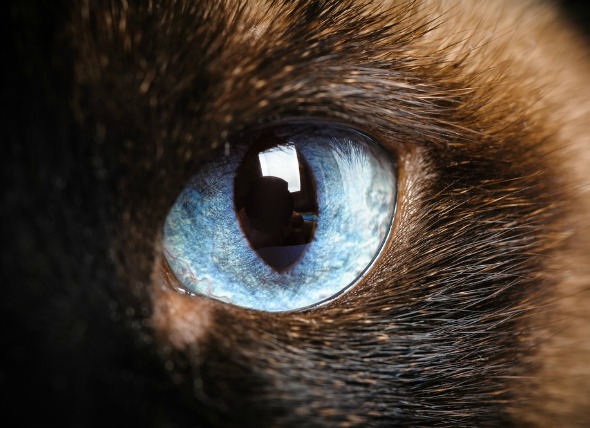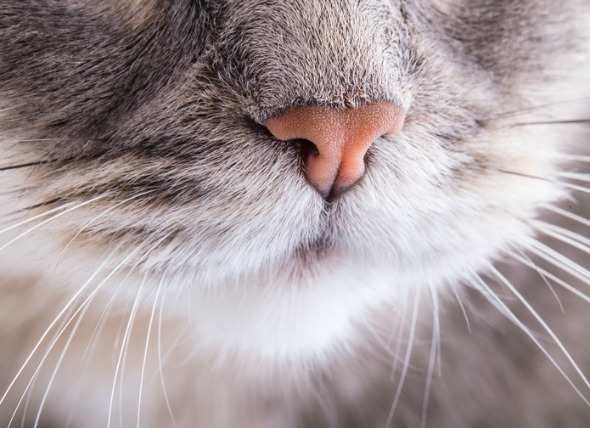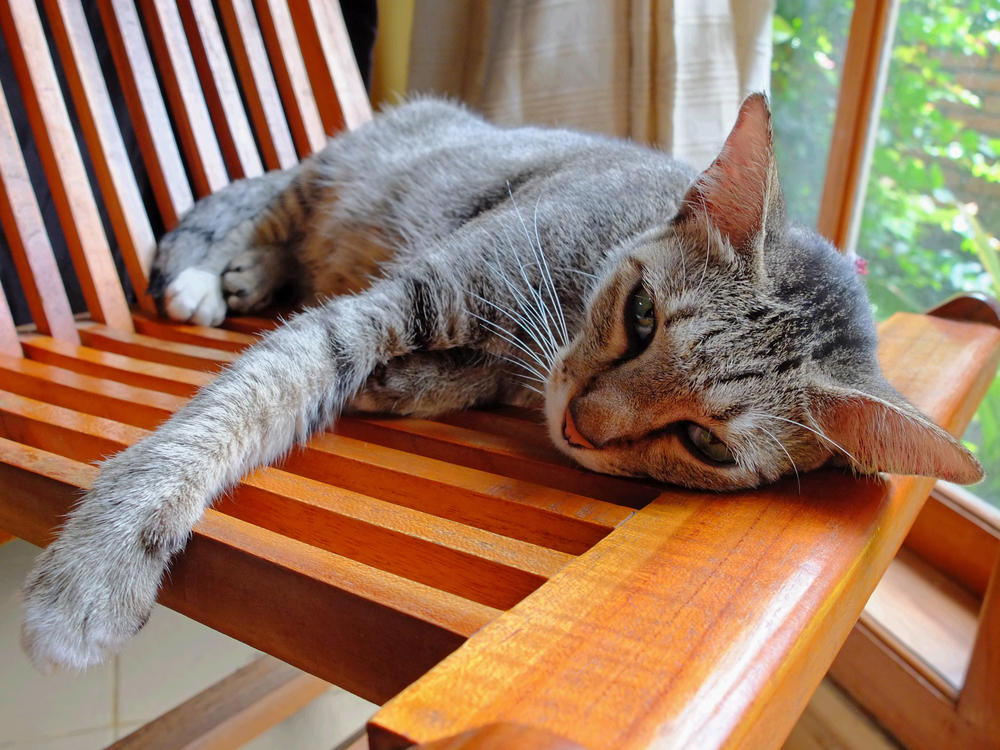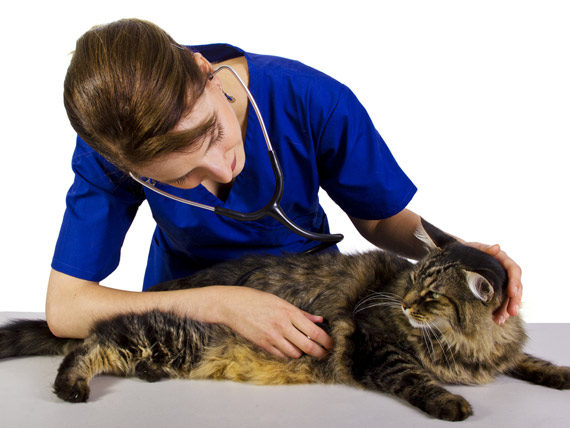
Blastomycosis is a systematic yeastlike fungal infection caused by the organism Blastomyces dermatitidis, which thrives in wet environments, such as riverbanks, lakes and swamps, where damp soil lacking direct sunlight fosters growth of the fungus. The fungus is also present in areas that are rich in decaying matter, such as wooded areas, forests, and farms. It is a naturally occurring North American fungus, with the highest prevalence of infection taking place in geographic areas located near water -- such as the Mississippi, Ohio, Missouri, and Tennessee River basins.
Blastomycosis typically occurs when a cat inhales the airborne fungal spores of the genus Blastomyces dermatitidis after the contaminated soil has been disturbed. This can be from an activity as benign as digging in the dirt or following a scent trail. The spores can also enter through the skin. Exposure to areas with water, decaying matter, or recently excavated areas increase the risk of exposure to the fungus and consequent development of the disease.
Care must be taken to test properly for this condition, since it is commonly misdiagnosed, which can lead to permanent or fatal damage. It may be mistaken for cancer and mistreated, or it may be mistaken for a lung infection of bacterial origin and treated with antibiotics, which puts your cat at greater risk. You will want to ask your veterinarian to test for fungal infection if your cat has been in an environment where the blastomyces fungus might have been present at any time in the six weeks previous to the onset of symptoms.
The best methods for diagnosing blastomycosis is through examination of the cells in the lymph nodes, an analysis of fluid drained from skin lesions, a tracheal (windpipe) wash for collecting tracheal fluids, and an examination of lung tissues. Tissue samples may also be taken to check for the presence of fungal organisms, especially if there is no productive cough (productive, meaning that fluids are produced). Other tests that may help diagnose blastomycosis include a urine analysis, and an X-ray of your cat's lungs.
Treatment is generally done at home using oral dosages of an antifungal medication. The medication is relatively expensive and must be administered for a minimum of 60 days, or one month after all signs of blastomycosis have disappeared.
In severely prolonged infections, or when medication has not cured the infection, surgery may be necessary to remove part of an abscessed lobe in damaged lungs. Chest X-rays can help determine the duration of and response to treatment, and reveal any permanent changes in the lungs that may have resulted from the treatment.
Even if your cat's health improves soon after starting medications, you will need to continue with the full course of antifungal medication to be positive that the infection will not recur. Limiting your cat's physical activities will also help in the recovery by avoiding excess strain on the lungs. Cage rest, or limiting your cat to an enclosed environment will encourage your cat to rest as much as possible. A high-quality diet to stimulate your cat's appetite is also encouraged during this time.
The disease is mainly spread through soil, but also has the possibility of being spread from animals to people through bite wounds. It should also be considered that you may have been exposed to the blastomyces organism at the same time as your pet. You will need to inform your own physician if you have breathing problems or skin lesions; both are possible indicators of blastomycosis.
This condition often is acquired in environments where decaying wood is found: farms, forests, wooded areas, camps, hunting areas. Decay of other organic material is also conducive to its growth in soil, especially when the soil is not exposed to sunlight and remains damp all the time.
Conversely, the spores may be more likely to go airborne during dry weather, when the contaminated dust is lighter. It is not easy to predict exactly where the blastomyces organism may be growing, and is thus difficult to avoid entirely.
The only useful recommendation that can be given is to avoid lakes and streams where risk of exposure is greatest. This is, admittedly, an impractical suggestion for most. If you do live or spend time in these types of geographic areas, you may practicably be able to avoid the dense, dark areas where the fungus would thrive, reducing your pet's risk of exposure. As well, if your cat's immune system is already compromised, you will not want to include it in trips to high risk areas.
This condition is only rarely transmittable from animal to animal, or from animal to human. In the event that transmission does occur, it is when the animal has an open and draining wound, and it comes into contact with an open wound on the human, or the discharge from the animal's wound gets into the human's eye. Taking care to avoid these circumstances when caring for your pet will be sufficient prevention.
 Tumor of the Eye in Cats
Uveal Melanoma in Cats
The uvea is the part of th
Tumor of the Eye in Cats
Uveal Melanoma in Cats
The uvea is the part of th
 Nose and Sinus Inflammation in Cats
Rhinitis and Sinusitis in Cats
Inflammation of a
Nose and Sinus Inflammation in Cats
Rhinitis and Sinusitis in Cats
Inflammation of a
 Do Male Cats Get Along Better With Female or Male Cats?
Do Male Cats Get Along Better With Female or M
Do Male Cats Get Along Better With Female or Male Cats?
Do Male Cats Get Along Better With Female or M
 Insecticide Toxicity in Cats
Organophosphate and Carbamate Toxicity
Areas that
Insecticide Toxicity in Cats
Organophosphate and Carbamate Toxicity
Areas that
 Salmonella Infection in Cats
Salmonellosis in Cats
Salmonellosis is an infecti
Salmonella Infection in Cats
Salmonellosis in Cats
Salmonellosis is an infecti
Copyright © 2005-2016 Pet Information All Rights Reserved
Contact us: www162date@outlook.com